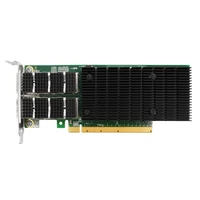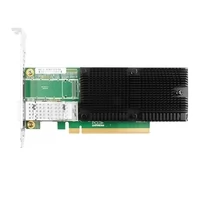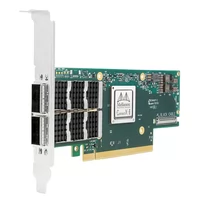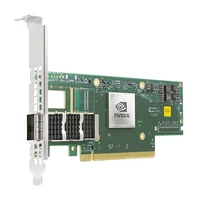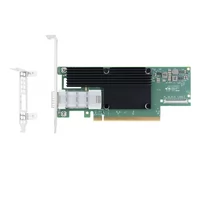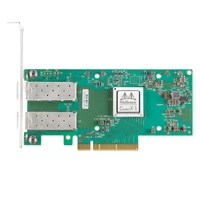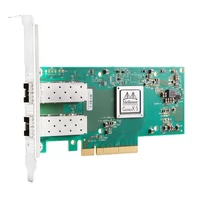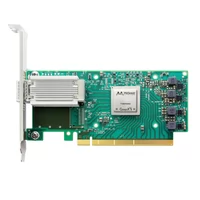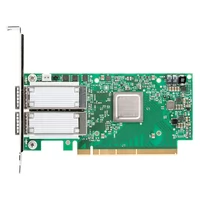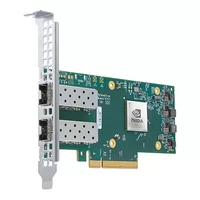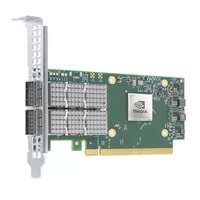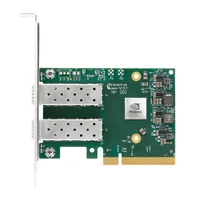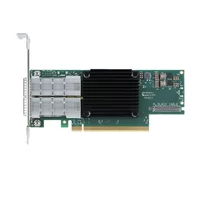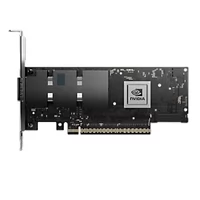The continuous development of network technology and hardware devices has changed the landscape of data centers and cloud computing. With the rapid increase of virtualization, microservice architecture, and high utilization of mobile devices and cloud services, the growth rate of network workloads has far exceeded the processing speed of traditional data center CPUs. This makes it urgent to find network solutions with higher performance, more flexibility, and more powerful functions.
Regarding network hardware selection, smart network interface cards (SmartNICs) and standard network interface cards (NICs) are two options that attract attention. This article will explore the characteristics, differences, and how to choose the appropriate option in specific use cases.
Table of Contents
ToggleStandard Network Interface Card (NIC): The Traditional Way of Network Connection
Standard network interface cards have been the main way of network connection for decades. They are hardware components that connect computers to networks, enabling communication between devices and the Internet. Standard network interface cards are mainly used for data transmission and reception and are widely used in data center environments for their reliability and robustness.
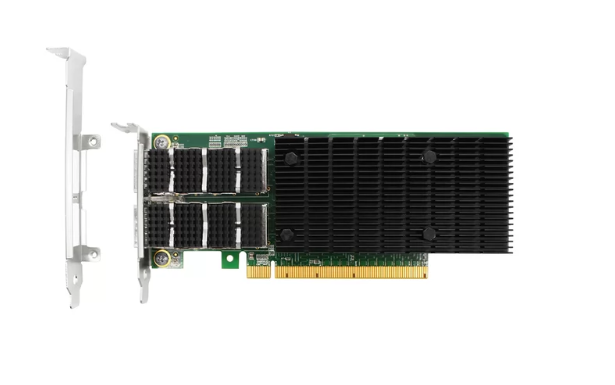
The Functions of Standard Network Interface Cards
Standard network interface cards have the following basic functions:
- Data packet transmission and reception
- Data packet verification and correction
- Data packet segmentation and reassembly
- MAC address management
These functions are sufficient to support common network connection requirements, but standard network interface cards may be inadequate when facing data-intensive applications, virtualization environments, cloud computing, and high-performance computing that require higher performance and functionality.
The Limitations of Traditional Hardware
Traditional data center hardware, including NIC-based network cards, can no longer meet the needs of modern data centers.
CPU overload
Traditional NIC-based architecture assigns network tasks to the server’s CPU, which results in CPU overload and inability to cope with high-intensity network workloads.
Difficulty in meeting high-performance requirements
Compute-intensive applications require higher performance and low latency. Traditional hardware cannot provide enough performance, resulting in performance bottlenecks.
Difficulty in management and maintenance
As the scale of data centers expands, managing and maintaining traditional hardware becomes more difficult. The growth of virtualization and microservices also increases the complexity of management.
Smart Network Interface Card (SmartNIC): Beyond Traditional Networking
SmartNIC is a new type of network card that goes beyond the traditional data transmission function. They are equipped with powerful processors, memory, and dedicated hardware that can perform various advanced functions. These functions include network enhancement, storage acceleration, security features, and more. The main goal of smart network interface cards is to offload and accelerate various network-related tasks from the host CPU, providing dedicated processing capabilities and hardware functions to enhance network performance, security, and efficiency.
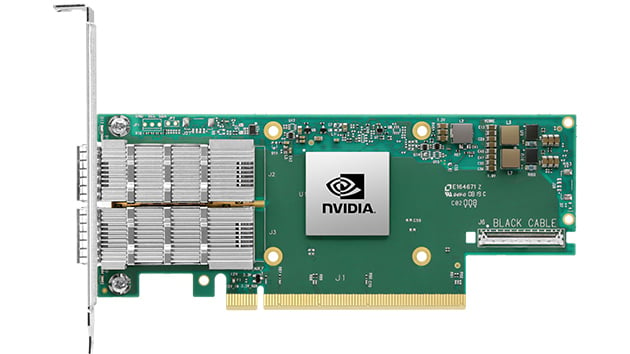
The Functions of SmartNIC
Smart network interface cards provide a range of advanced functions, including:
- Data packet filtering and load balancing.
- Quality of service (QoS) enforcement.
- Storage acceleration, including remote direct memory access (RDMA), iSCSI, and NVMe over Fabrics.
- Security features, such as firewall processing and intrusion detection system (IDS) inspection.
These functions make smart network interface cards powerful tools for various advanced use cases, from improving network performance to enhancing security, to storage acceleration.
Early SmartNIC Implementations
Early SmartNIC implementations used register-driven ASIC logic, which performed well in terms of performance, with very low latency, high packet throughput, and low power consumption (typically between 15 watts and 35 watts). However, despite their performance advantages, they often lacked the necessary programmability and flexibility. They usually required arcane command-line tools to set registers, and lacked the ability to programmatically manage packets and flows.
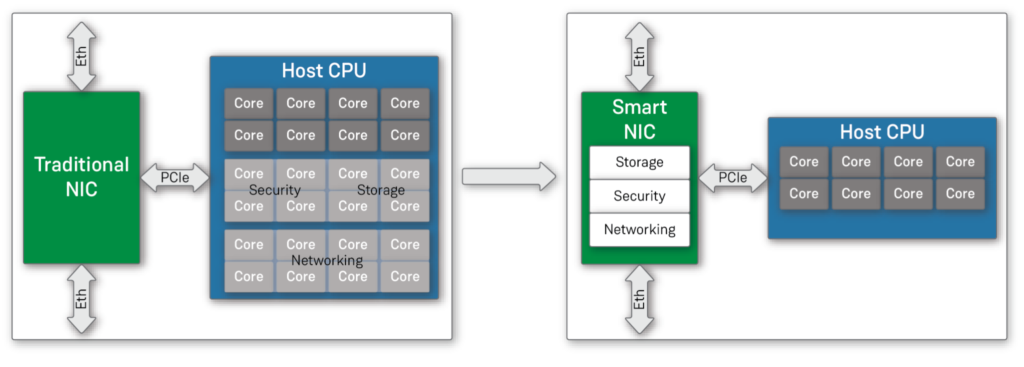
Various Deployment Modes of SmartNICs
SmartNICs play a key role in various deployment scenarios, including storage, security, and network processing. Specific tasks that SmartNICs may undertake include handling tunneling protocols (such as VxLAN) and complex virtual switching, as shown in the figure. Their ultimate goal is to consume fewer host CPU processor cores while providing higher-performance solutions at a lower cost.
The Difference Between Standard NICs and SmartNICs
Networking function
Standard NICs are mainly designed to handle basic networking tasks, such as packet transmission, segmentation, and checksum correction. Although SmartNICs also perform these tasks, they implement more complex networking functions on the card itself, such as packet filtering, load balancing, and quality of service (QoS) enforcement, thereby offloading these tasks from the host CPU. This reduces latency, lowers CPU utilization, and improves overall network performance.
Storage function
SmartNICs excel in storage acceleration, especially for modern data-intensive applications. They can offload storage functions such as remote direct memory access (RDMA), iSCSI, and NVMe over Fabrics, which increase data transfer speed and reduce CPU overhead. In contrast, standard NICs lack the hardware and processing capabilities required for these storage-intensive tasks.
Task offloading to SmartNIC
One of the most notable advantages of SmartNICs is their ability to offload various tasks from the host CPU to the card. This not only includes networking and storage functions but also security tasks such as firewall processing and intrusion detection system (IDS) inspection. By moving these tasks to the SmartNIC, the host CPU can free up time to focus on application-specific processing, which improves application performance and reduces server sprawl.
How to Choose Between Standard NICs and SmartNICs
When choosing between standard NICs and SmartNICs, you need to evaluate your specific networking needs and use cases. Here are some factors to consider:
Performance and speed
If your applications require excellent network performance, lower latency, and advanced features such as load balancing, storage acceleration, etc., then SmartNICs might be a better choice. They can offload and accelerate various tasks, which improves overall performance.
Workload and Use Case
Consider the nature of your workload and use case. SmartNICs have an edge in data-intensive scenarios, virtualized environments, machine learning, and cloud services, as these scenarios require high-level networking and storage functions. If your environment demands more functionality and performance, then SmartNICs might be a more suitable choice.
Budget and Cost
You also need to consider your budget constraints when choosing a card. SmartNICs are usually more expensive than standard NICs, as they offer more functionality and performance. If cost is a key factor, then standard NICs might be a more economical choice.
Conclusion
In the field of network connectivity, we often find ourselves choosing between standard network interface cards (NICs) and smart network interface cards (SmartNICs). Different use cases and requirements will determine your best choice. Some Intel-based Ethernet adapters, such as the E810CAM2-2CP, have many advanced features, including support for various network protocols such as Ethernet, TCP/IP, UDP/IP, etc., on-chip QoS, traffic management, iWARP/RDMA, RoCEv2/RDMA, smart offload, and storage functions such as iSCSI and NFS. These adapters are rigorously tested and certified to ensure full compatibility with various operating systems and hypervisors, providing a balanced and reliable solution for users who seek the best network performance and functionality. In addition to these featured NIC solutions, there are also Mellanox SmartNICs available. In collaboration with Mellanox Technologies, these SmartNICs unlock the infinite possibilities of network enhancement, offload, and security. Whether you choose an advanced NIC or a SmartNIC, you can ensure that your network runs in the best, secure, and efficient way according to your networking needs. In the ever-evolving field of networking, choosing the right card is crucial, as it will directly affect your network performance, security, and application delivery. Therefore, understanding the pros and cons of standard NICs and SmartNICs and how to choose them based on specific needs will help you ensure that your network can meet the changing demands.
Related Products:
-
 Intel®Ethernet Controller E810-CAM2 100G Dual-Port QSFP28, Ethernet Network Adapter PCIe 4.0 x16
$609.00
Intel®Ethernet Controller E810-CAM2 100G Dual-Port QSFP28, Ethernet Network Adapter PCIe 4.0 x16
$609.00
-
 Intel® E810-CQDA1 100G Ethernet Network Adapter PCIe v4.0 x16 Single port QSFP28
$409.00
Intel® E810-CQDA1 100G Ethernet Network Adapter PCIe v4.0 x16 Single port QSFP28
$409.00
-
 NVIDIA NVIDIA(Mellanox) MCX653106A-ECAT-SP ConnectX-6 InfiniBand/VPI Adapter Card, HDR100/EDR/100G, Dual-Port QSFP56, PCIe3.0/4.0 x16, Tall Bracket
$828.00
NVIDIA NVIDIA(Mellanox) MCX653106A-ECAT-SP ConnectX-6 InfiniBand/VPI Adapter Card, HDR100/EDR/100G, Dual-Port QSFP56, PCIe3.0/4.0 x16, Tall Bracket
$828.00
-
 NVIDIA NVIDIA(Mellanox) MCX653105A-ECAT-SP ConnectX-6 InfiniBand/VPI Adapter Card, HDR100/EDR/100G, Single-Port QSFP56, PCIe3.0/4.0 x16, Tall bracket
$965.00
NVIDIA NVIDIA(Mellanox) MCX653105A-ECAT-SP ConnectX-6 InfiniBand/VPI Adapter Card, HDR100/EDR/100G, Single-Port QSFP56, PCIe3.0/4.0 x16, Tall bracket
$965.00
-
 NVIDIA NVIDIA(Mellanox) MCX653105A-HDAT-SP ConnectX-6 InfiniBand/VPI Adapter Card, HDR/200GbE, Single-Port QSFP56, PCIe3.0/4.0 x16, Tall Bracket
$1400.00
NVIDIA NVIDIA(Mellanox) MCX653105A-HDAT-SP ConnectX-6 InfiniBand/VPI Adapter Card, HDR/200GbE, Single-Port QSFP56, PCIe3.0/4.0 x16, Tall Bracket
$1400.00
-
 NVIDIA NVIDIA(Mellanox) MCX512A-ACAT SmartNIC ConnectX®-5 EN Network Interface Card, 10/25GbE Dual-Port SFP28, PCIe 3.0 x 8, Tall&Short Bracket
$318.00
NVIDIA NVIDIA(Mellanox) MCX512A-ACAT SmartNIC ConnectX®-5 EN Network Interface Card, 10/25GbE Dual-Port SFP28, PCIe 3.0 x 8, Tall&Short Bracket
$318.00
-
 NVIDIA NVIDIA(Mellanox) MCX512A-ACUT SmartNIC UEFI Enabled (x86/Arm) ConnectX®-5 EN Network Interface Card, 10/25GbE Dual-Port SFP28, PCIe 3.0 x 8, Tall&Short Bracket
$318.00
NVIDIA NVIDIA(Mellanox) MCX512A-ACUT SmartNIC UEFI Enabled (x86/Arm) ConnectX®-5 EN Network Interface Card, 10/25GbE Dual-Port SFP28, PCIe 3.0 x 8, Tall&Short Bracket
$318.00
-
 NVIDIA NVIDIA(Mellanox) MCX515A-CCAT SmartNIC ConnectX®-5 EN Network Interface Card, 100GbE Single-Port QSFP28, PCIe3.0 x 16, Tall&Short Bracket
$715.00
NVIDIA NVIDIA(Mellanox) MCX515A-CCAT SmartNIC ConnectX®-5 EN Network Interface Card, 100GbE Single-Port QSFP28, PCIe3.0 x 16, Tall&Short Bracket
$715.00
-
 NVIDIA NVIDIA(Mellanox) MCX516A-CCAT SmartNIC ConnectX®-5 EN Network Interface Card, 100GbE Dual-Port QSFP28, PCIe3.0 x 16, Tall&Short Bracket
$985.00
NVIDIA NVIDIA(Mellanox) MCX516A-CCAT SmartNIC ConnectX®-5 EN Network Interface Card, 100GbE Dual-Port QSFP28, PCIe3.0 x 16, Tall&Short Bracket
$985.00
-
 NVIDIA NVIDIA(Mellanox) MCX621102AN-ADAT SmartNIC ConnectX®-6 Dx Ethernet Network Interface Card, 1/10/25GbE Dual-Port SFP28, Gen 4.0 x8, Tall&Short Bracket
$315.00
NVIDIA NVIDIA(Mellanox) MCX621102AN-ADAT SmartNIC ConnectX®-6 Dx Ethernet Network Interface Card, 1/10/25GbE Dual-Port SFP28, Gen 4.0 x8, Tall&Short Bracket
$315.00
-
 NVIDIA MCX623106AN-CDAT SmartNIC ConnectX®-6 Dx EN Network Interface Card, 100GbE Dual-Port QSFP56, PCIe4.0 x 16, Tall&Short Bracket
$1200.00
NVIDIA MCX623106AN-CDAT SmartNIC ConnectX®-6 Dx EN Network Interface Card, 100GbE Dual-Port QSFP56, PCIe4.0 x 16, Tall&Short Bracket
$1200.00
-
 NVIDIA(Mellanox) MCX631102AN-ADAT SmartNIC ConnectX®-6 Lx Ethernet Network Interface Card, 1/10/25GbE Dual-Port SFP28, Gen 4.0 x8, Tall&Short Bracket
$385.00
NVIDIA(Mellanox) MCX631102AN-ADAT SmartNIC ConnectX®-6 Lx Ethernet Network Interface Card, 1/10/25GbE Dual-Port SFP28, Gen 4.0 x8, Tall&Short Bracket
$385.00
-
 NVIDIA NVIDIA(Mellanox) MCX653106A-HDAT-SP ConnectX-6 InfiniBand/VPI Adapter Card, HDR/200GbE, Dual-Port QSFP56, PCIe3.0/4.0 x16, Tall Bracket
$1600.00
NVIDIA NVIDIA(Mellanox) MCX653106A-HDAT-SP ConnectX-6 InfiniBand/VPI Adapter Card, HDR/200GbE, Dual-Port QSFP56, PCIe3.0/4.0 x16, Tall Bracket
$1600.00
-
 NVIDIA NVIDIA(Mellanox) MCX75510AAS-NEAT ConnectX-7 InfiniBand/VPI Adapter Card, NDR/400G, Single-port OSFP, PCIe 5.0x 16, Tall Bracket
$1650.00
NVIDIA NVIDIA(Mellanox) MCX75510AAS-NEAT ConnectX-7 InfiniBand/VPI Adapter Card, NDR/400G, Single-port OSFP, PCIe 5.0x 16, Tall Bracket
$1650.00

